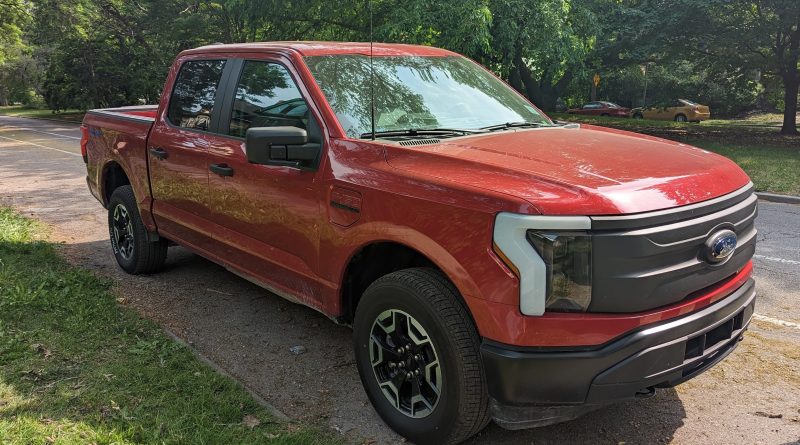Ford F-150 Lightning Review: The F-150, But Electric. That’s About It.
A few weeks ago, I got to ride in an F-150 Lightning, Ford’s new electric pickup truck. Why? Why not? It’s more or less exactly like a gas-powered (“acoustic”) F-150, save for a spacious frunk with built-in power supply for your campsite rave, or what have you. Ergonomically, though? Pretty much identical to an F-150. Is this a good thing or a bad thing? It depends on who you ask. For me, as someone who finds it abhorrent that vehicles have been getting larger and larger each year (and therefore more lethal), and as someone who wants innovation to at least feel innovative, it’s not a great thing. If you’re looking to have the exact same experience driving an F-150 but with the advantage of things that zero consumers actually need, like the ability to go from 0-60mph in under 4 seconds.

To the uninitiated, electric cars can accelerate really fast because electric motors are way better at delivering torque (rotational momentum) than gas-powered cars. An acoustic car, if you will, has to go through several steps before we even get to the part where the wheels go vroom: first, gasoline has to be mixed with air and then injected into the cylinders– and then ignited. Two or four strokes later, we’re turning an axle, which is turning wheels. The differential turns the other wheels, depending on whether it’s a FWD, RWD, or 4WD/AWD. In contrast, electric motors instantly convert electrical energy into magnetic power, which turns the axles and thus the wheels.
This is good if you’re looking for a sports car.
But nobody should be accelerating this quickly in a 6000-lb vehicle. Because that’s dangerous and unnecessary. Fun? I don’t know. There are a lot of things that I find more fun than flooring the accelerator in a car that may well create far more brake dust and tire particulates than its gas-powered predecessor.
Would I then not want to save the money and just take the ICE version? The Lightning has sold for as much as $100,000 in its initial release (people gotta get that New Truck!), but is now closer to around half that, and has seen some recent price drops. I’ve written about how automakers don’t know how to price electric and hybrid cars, and perhaps it’s less about overt ignorance or foolishness and more about the fact that they’ve been able to get away with it until well into 2023, when the economy has started to slow down a wee bit (finally). Even Tesla has been dropping prices. The market is becoming far more competitive as everyone is now making electric cars.


Also, I think we can safely say that the acoustic F-150 is going to be far more expensive in the long run than the electric. Seeing as the F-150 gets all of 22mpg on the highway, the gas savings alone make the F-150 Lightning a better bet. One source estimated that the operating costs in terms of gas alone are 3-4 times higher for the gas F-150 than for the electric for a 15,000-mile-per-year driver. When we get into the thousands of dollars (versus under $1000 for the Lightning), that’s when the electric car starts to be more appealing. Production is increasing, but still pales in comparison to the million-plus F-150 (gas) units sold in 2018 (sales have dipped a bit since then).
Again: I’m not buying this truck, I just had the opportunity to ride around in it. Definitely preferred the Tesla for a number of reasons (in spite of its CEO being a mega doofus), but definitely not going to be buying one of those either any time soon. It’s going to be interesting to see whether the “this is a regular F-150 with a different engine” approach to design will sway the F-150 loyalists, who represent the largest single segment of Ford’s market. Ford’s ostensible commitment to decarbonization can be witnessed in the fact that it has discontinued smaller, more fuel-efficient vehicles, while promising that the F-150 Lightning will fix it. Whether consumers will be sold, however, is another question. I am personally not.




